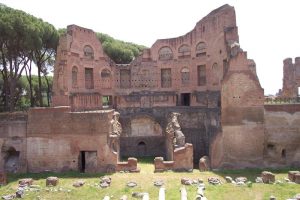
Roman architecture: the bath building of Domitian’s palace in Rome
Arches, brick, and concrete
One of the things the Romans are most famous for is their architecture. And it’s true that the Romans brought a lot of new ideas to architecture. The three most important ideas are the arch, the baked brick, and the use of cement and concrete.
Etruscan architecture came first
Around 700 BC, Etruscans and Carthaginians brought West Asian ideas about architecture to Italy. They taught these ideas to the Romans. We don’t have much Etruscan architecture left, but a lot of their underground tombs do survive, and some traces of their temples.
(More about Etruscan architecture)
Buildings of Republican Rome
In the Republican period, the Romans built temples and basilicas, but also they made a lot of improvements to their city: aqueducts and roads and sewers. These buildings and roads paralleled the ones being built at the same time in China and India, in West Asia, in North Africa, and in South America.

This is the amphitheater in ancient Carthage where Romans killed Christians during the Decian persecution.
(More about Roman basilicas)
The Forum in Rome, and other forums in other towns, began to take shape. Outside of Rome, people began to build stone amphitheaters for gladiatorial games.
(More about Roman amphitheaters)
The Roman Empire
The first Roman emperor, Augustus, made more changes: he built a lot of brick and marble buildings, including a big Altar of Peace and a big tomb for his family, and a big stone theater for plays. Augustus’ stepson Tiberius rebuilt the Temple of Castor and Pollux in the Roman forum.
Augustus’ great-great-grandson Nero also did a lot of building in Rome, including his Golden House. Then in 69 AD Vespasian tore down some of the Golden House to build the Colosseum. Vespasian’s son Titus built a great triumphal arch, and his other son Domitian built a great palace for himself on the Palatine hill.
(More about Domitian’s palace)

The inside of the Pantheon
Even though Domitian’s cousin killed him in 96 AD, later architects kept on using the techniques that had been developed for his palace, just as later emperors continued to live in Domitian’s palace.
Trajan’s architect used brick and concrete arches to build a new forum with a big column in it and an elaborate market building that is the source of modern shopping malls. Trajan also built the first major public bath building in Rome.
(More about Trajan’s Markets)
It may have been the same architect who later designed Hadrian’s Pantheon, a temple to all the gods, which used brick and concrete to build a huge dome. Nobody would build a bigger dome for more than a thousand years.
(More about the Pantheon)
Architecture in the Roman provinces
In the provinces of the Roman Empire, people were also building forums, temples, bath buildings, amphitheaters and apartment blocks. But generally they built them smaller than buildings in Rome. There are many well-preserved Roman cities around the Roman Empire.
(More about Roman apartment buildings)
In Italy, there’s Pompeii, Ostia, and Cosa. Going eastward around the Mediterranean, there are well-preserved Roman towns in Turkey at Ampurias, and in Israel at Caesarea.
In North Africa, there are Roman cities in Libya at Lepcis Magna, and in Tunisia at Bulla Regia, Dougga, and Maktar. Further west, there are Roman towns in Morocco at Volubilis, and in Spain at Italica and Empurias.
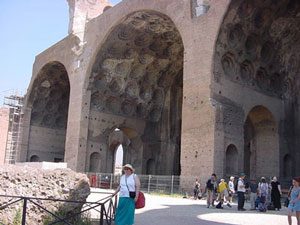
Basilica of Maxentius and Constantine in the Roman Forum
The Later Roman Empire
After Hadrian, there was no more money coming in from conquest and plunder. So the Romans had to cut back a bit on their building programs. Still, the emperor Caracalla built a great bath building in Rome in the early 200s AD.
(More about the Baths of Caracalla)
And in the late 200s the emperor Diocletian built another set of baths. In the early 300s AD, the emperor Maxentius built a great imperial palace outside the walls of Rome, and a basilica in the Roman Forum.
(More about the Basilica of Maxentius)
Constantine built a triumphal arch, and a series of Christian churches. But then he transferred the capital of the Roman Empire to Constantinople (Istanbul) where he, and his successors, built many more churches, circuses, and palaces.
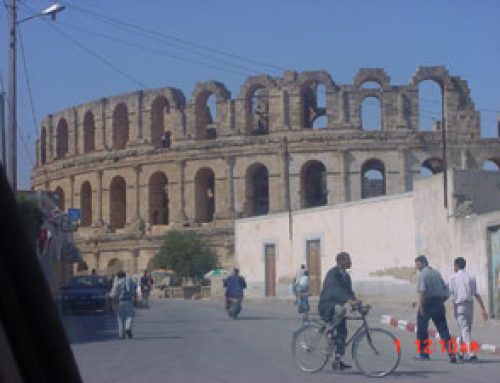
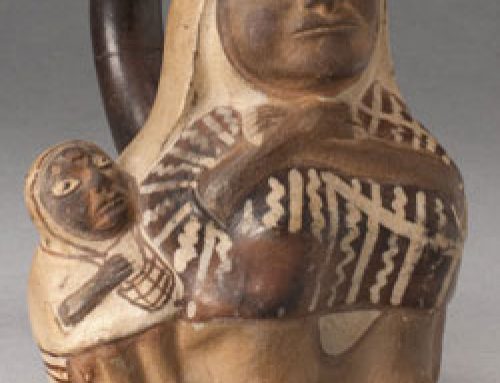
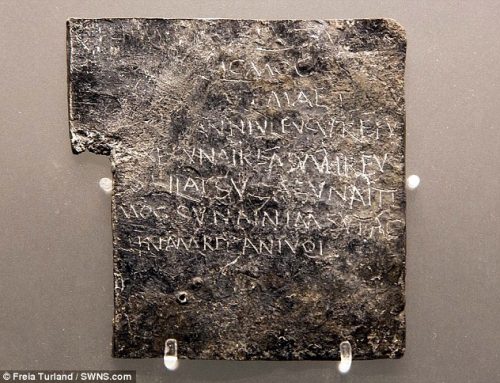
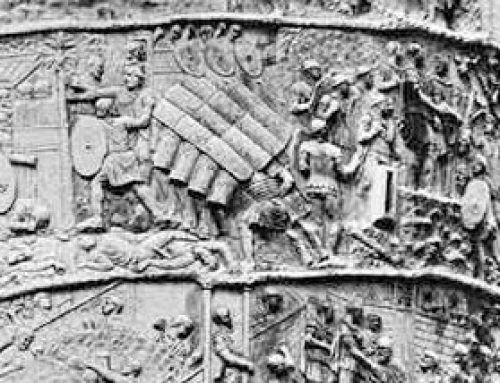
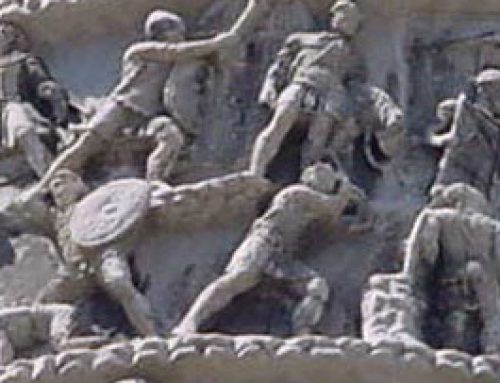
What is the origin of the apse? Many cathedrals have them and I want to believe that the first concept of the apse was in the Roman forum perhaps the Basilica of Maxentius?
Your idea is right! There were certainly apses in the Basilica of Maxentius, and also in Constantine’s basilica at Trier. But they go back earlier than that: there are apses in Roman bath buildings like the Baths of Caracalla, and Domitian’s palace on the Palatine hill, and in the Domus Aurea, Nero’s Golden House, from the first century AD.
https://quatr.us/romans/domitians-palace-domus-flavia-roman-architecture.htm
thanks for the info
You’re welcome, Amy! If you have a librarian or teacher who could link to us, we’d be very grateful for a link to this page, or to the site in general.
cant find what im looking for
the info I was looking for isnt here :(
What was your question? Maybe I can point you to the right article?
I can’t find what I’m looking for
What are you looking for? I’d be happy to help.
Thank you for information.
You’re welcome! I’m glad we could help.